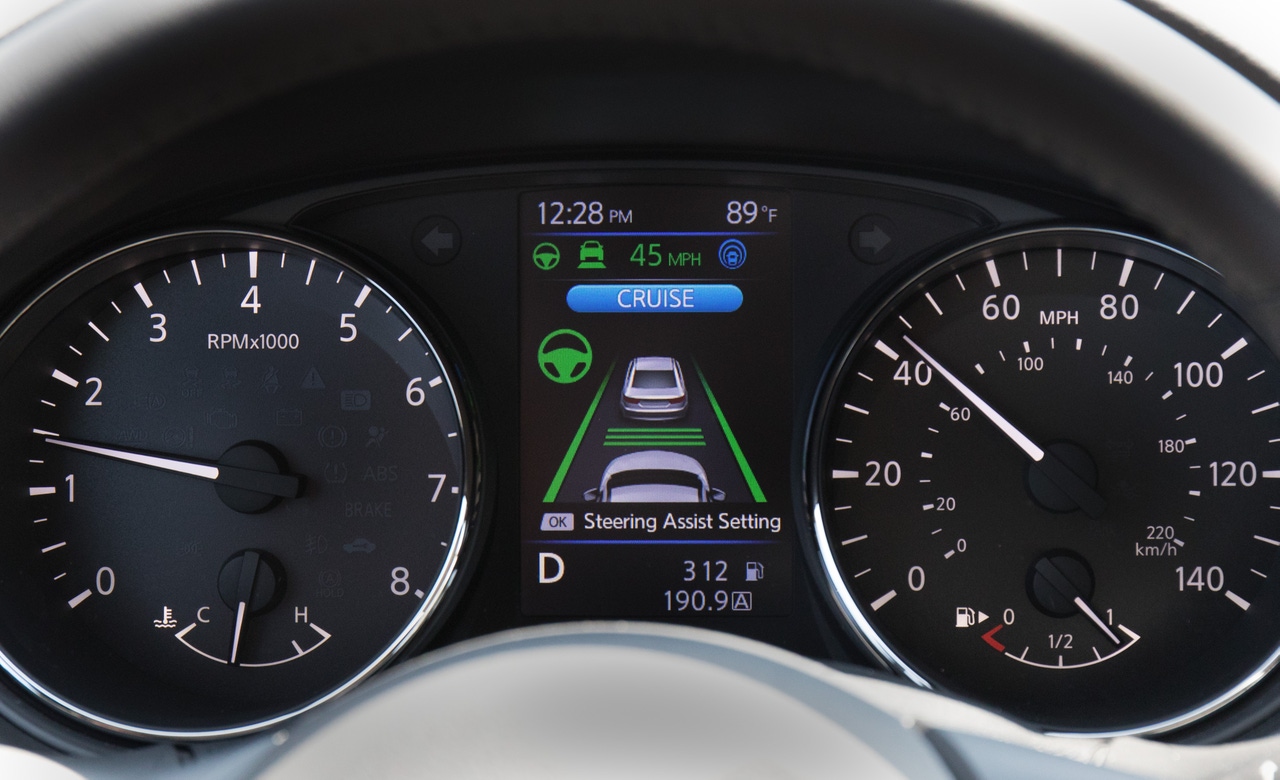Nissan Aims to Ease Stress of Heavy Traffic With ProPilot
The automaker is targeting a wide rollout of ProPilot Assist, with similar technology to be offered across its Nissan, Infiniti and Datsun brands.
July 21, 2017

FARMINGTON HILLS, MI – Nissan is bringing together adaptive cruise control and lane-keeping assist with lane-centering technology into one feature it is branding ProPilot Assist.
The technology combination, meant to cope with heavy stop-and-go traffic in single-lane driving, debuts this fall in the U.S. in the refreshed Nissan Leaf electric vehicle. It launched last year in Japan in Nissan’s Serena minivan.
While many automakers offer similar systems – although not necessarily in a single package – Nissan officials say ProPilot is more seamless in its operation and should result in less tension for the driver when it is in use.
“Our intention is to keep drivers in charge, and we’re taking away the stress of the drive,” says Chris Reed, vice president-components engineering here at Nissan’s Technical Center North America near Detroit. “It may not sound remarkable, but (when I’m) driving in L.A. it’s amazing the difference between the tension that you have with (other systems vs. this).”
Nissan sees its advantage in the semi-autonomous sector in how the two technologies together are activated via a single button push (in Rogue CUVs with prototype ProPilot systems driven here, the button is on the steering wheel) and a long standby time when a ProPilot-equipped model comes to a complete stop.
“(Adaptive) cruise control does bring the vehicle to a stop like some other systems today,” says Andy Christensen, senior manager-intelligent transportation systems research for NTCNA. “However, other systems today, when the vehicle comes to a stop, it’ll only hold for a second or two. The system will beep, release the brakes, and now the driver must put their foot on the brake pedal and hold the vehicle.
“We’ve enhanced this to allow the system to remain active, basically stop and hold,” Christensen continues. “So the driver doesn’t even put their foot on the brake. The system will continue to hold on its own.”
If a stop is under three seconds and the vehicle ahead begins moving, a ProPilot Assist-equipped Nissan automatically will proceed, he says. If the stop is more than three seconds, a driver will need to hit a resume button on the steering wheel or tap the accelerator to re-engage the system from standby.
As for lane-centering, it can adapt to a driver’s preference for the left or right side of a lane, Larry Smythe, an HMI engineer at NTCNA tells WardsAuto.
Smythe says Nissan has put more than 50,000 test miles (80,467 km) on ProPilot prototypes in testing around the U.S., with special attention paid to reading lane markings in tunnels with low lighting or on road surfaces that may be patched with tar. The latter can be an issue for lane-keep systems if the patch is detected instead of a painted lane line.
ProPilot is camera- and radar-based, with a camera in front of the rearview mirror tracking lane markings and a radar sensor placed behind the front grille measuring speed and distance of the vehicle ahead. The camera comes from ZF, with a processor by Intel’s Mobileye. Nissan will not divulge its radar supplier.
The Japanese automaker will allow for the two systems to function separately, with Smythe noting a LKAS system on/off button is left of the steering wheel here on prototype Rogues.
The ability to turn off LKAS accounts for environmental and infrastructure conditions, says Takeshi Yamaguchi, senior vice president-R&D for NTCNA, noting bright sun or snow can cause lane-centering systems to malfunction.
But Reed presumes most drivers will want to use both ACC and LKAS together.
“We think the competitiveness and the kind of capability of the system to maintain its position will be more seamless for the customer so that you’re not feeling annoyed by it,” he says.
In a 34-mile (55-km) test of a Rogue with ProPilot Assist in suburban Detroit, WardsAuto found this system to function as intended. As the test occurred during the late morning, we never encountered highway stop-and-go traffic that brought our vehicle to a full stop. However, in making a right turn from one surface road onto another, our Rogue slowed to a crawl behind a stream of other cars turning right.
Like most lane-centering systems, the automatic turning of the steering wheel can take some getting used to, but it was no more jarring than other similar systems.
ProPilot Assist’s ability to read lane lines was inconsistent, given Metro Detroit’s infamous subpar roads with faded lane markings.
The ability for ProPilot Assist’s ACC to hold a vehicle at a stop for three seconds is nice, but a Subaru Impreza hatchback WardsAuto is testing this week has the same 3-second hold time for its ACC system when encountering stopped traffic.
Despite having the word “pilot” in its name, Nissan officials here emphasize ProPilot is not like Tesla’s Autopilot and is for assisted, not autonomous driving. Hands need to be on the steering wheel (visual and audible warnings will sound if they are not) and eyes should be on the road, Reed says.
“We’re very sensitive to how we roll this out, how we educate…the dealers, then the customers. It’s a balance between the excitement of what we’re doing and not overpromising.”
Nissan is targeting a wide rollout of ProPilot Assist but will not divulge the next vehicle to get it after the Leaf. It says the technology will be similar across its Nissan, Infiniti and Datsun brands, although naming conventions may differ.
You May Also Like